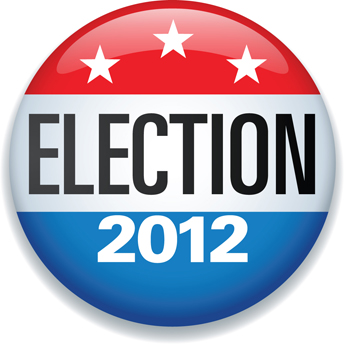In one Florida county, voters were wrongly told they could vote the day after the election. In storm-wracked New Jersey, emergency plans to allow email voting proved too popular for election officials to handle. In Pennsylvania and Ohio, a variety of problems raised questions about the integrity of the vote.
While most Americans cast ballots without incident Tuesday, there were enough glitches to cause concern among voting rights activists and to provide work for some of the thousands of lawyers who were standing by, representing parties, candidates and nonpartisan voter advocacy groups.
“Unfortunately, it’s a long American tradition,” said Rick Hasen, a law professor at the University of California, Irvine who writes a popular blog on election issues. He said it was difficult to say whether there were more problems in this election than usual – but that interest in voting difficulties was higher.
The heightened vigilance reflected the anticipated tight race between President Barack Obama and Republican challenger Mitt Romney, and the possibility that a relative handful of votes in a battleground state could determine the election.
The problems that cropped up were both prosaic and, in some cases, highly unusual.
Long lines in many jurisdictions attested to both to the American democratic spirit and some inadequate local electoral systems. Voting rights advocates blamed some of the long lines on decisions by some states to cut back on early voting hours, forcing more people to vote on Election Day.
Pennsylvania was the site of some of the most widely reported problems. The most serious involved confusion over the state’s new voter identification law and an attempt to keep GOP poll watchers from monitoring heavily Democratic precincts in Philadelphia.
A judge ordered election officials to admit the Republican monitors, according to state GOP officials. In a separate case, Republicans successfully petitioned to cover up a mural of Obama in a Philadelphia polling place.
And in heavily Democratic Philadelphia County, dozens of registered voters complained that they were forced to use provisional ballots because their names did not appear on voter rolls.
Ellen Kaplan, vice president of The Committee of Seventy, a nonpartisan voters rights group, said the problem seemed to be linked to a backlog of voter registration applications that were not processed by state officials until last week. She said voters were told to use provisional ballots even when they could prove their registration status.
“They were all coming in with iPads and iPhones and looking it up,” she said.
Perhaps the most widely observed problem occurred in central Pennsylvania, where a voter posted a YouTube video that showed him attempting to vote for Obama on an electronic voting machine that kept switching the vote to Romney.
“As far as we know, it was an isolated incident,” said Ron Ruman, a spokesman for Pennsylvania’s Department of State. He said there was no evidence that any votes were miscast on the machine before the videotaped incident. The voter who made the tape was allowed to vote on another machine. Ruman said the problem was one of improper calibration, and that the machine was recalibrated and put back in service.
In Pinellas County, Fla., about 12,000 households received phone calls early Tuesday with an automated message saying the voters still had until the following day to turn in their absentee ballots. By then, of course, the election would presumably be over.
Such calls are often a classic political dirty trick. But these came straight from the Pinellas County Elections Department, which sent the calls – which were intended to be made Monday – by mistake, according to Nancy Whitlock, the elections department communications director.
The phone mix-up was one of a scattered number of problems across Florida, the huge and volatile swing state that, in this razor-close election, has been on high alert for issues of potential voter suppression or other problems that could depress turnout.
In Miami-Dade County, where some voters waited six hours during early voting, some polling places had around-the-block lines again when polls opened Tuesday morning. In Hillsborough County, which includes Tampa, the phones in the election department were working only intermittently, said Travis Abercrombie, spokesman for the elections department.
The phone issues were adding to the confusion at the polls, said Dana Lindenbaum, an attorney volunteering with the Election Protection organization. In one precinct, about 15 voters who arrived at one place were told their polling place had moved – and weren’t told the correct new location, she said.
“People are just getting sent around and they are not getting the right answers,” she said.
In New Jersey, problems stemming from Superstorm Sandy caused election computers to crash and some polling places were not able to open by late morning, according to Barbara Arnwine, executive director of the Lawyers’ Committee for Civil Rights Under Law. It also led officials in Essex County, the state’s third largest, to concede that they wouldn’t be able to process all the applications for email voting – an emergency procedure that the state allowed in the wake of the storm.
“There is just a word – just one word – to describe the situation around New Jersey, and that is catastrophe,” Arnwine said in a teleconference that included representatives of a broad coalition of voting rights and civil rights advocates.
Election officials in Essex, home to Newark as well as upscale suburbs for New York City commuters, said they received more than 3,000 faxed or emailed applications, more than they had expected. They complained that some people were taking advantage of the offer.
“This was set in place for people who are truly displaced due to the hurricane disaster, not for easy voting,” said Christopher Durkin, the county clerk. “It doesn’t seem as though the honor system is working, and it’s a shame for the people who are truly displaced.”
The American Civil Liberties Union of New Jersey asked a state court to intervene Tuesday, and election officials extended the application deadline through the afternoon and allowed residents displaced by Sandy to submit faxed or emailed ballots by 8 p.m. Friday.
Arnwine said there were problems with voting machines crashing in Ohio, which, along with Florida, received the most attention in the run-up to the election. The problems appeared to have been fixed by late morning and voting was taking place without apparent problem.
By Mitchell Landsberg, Los Angeles Times










